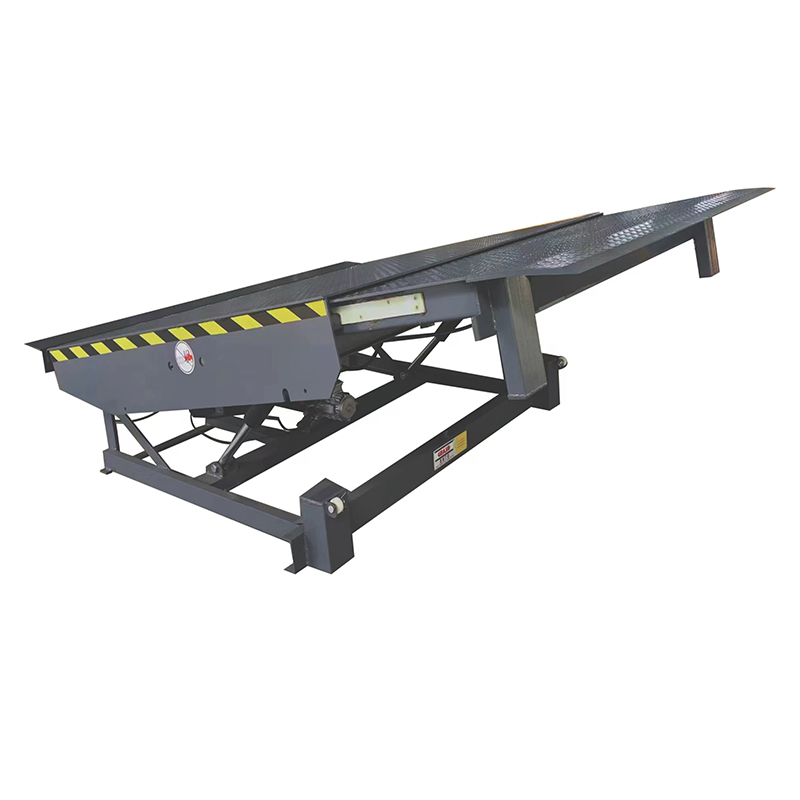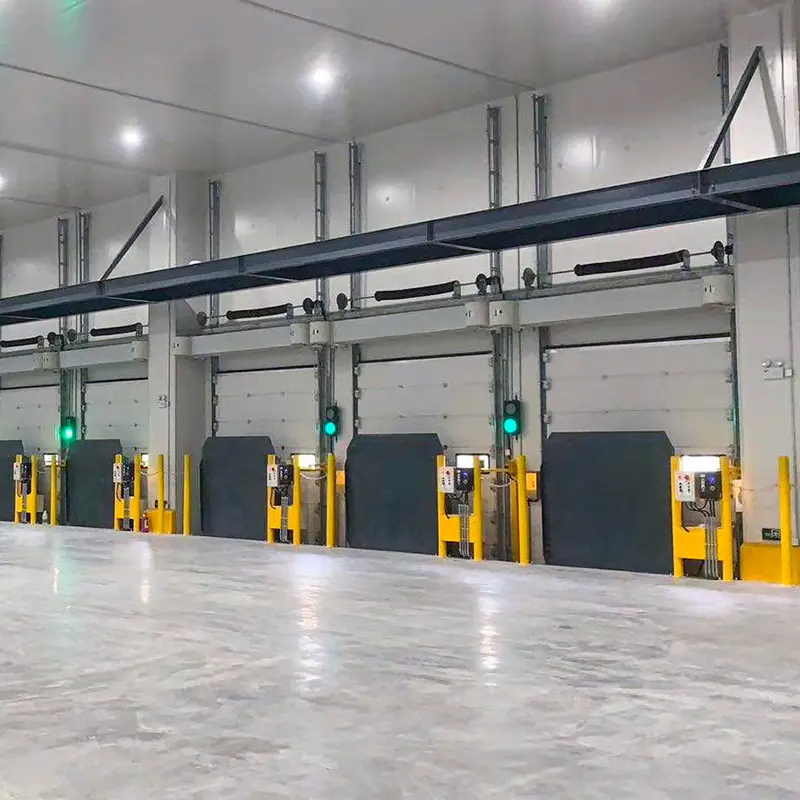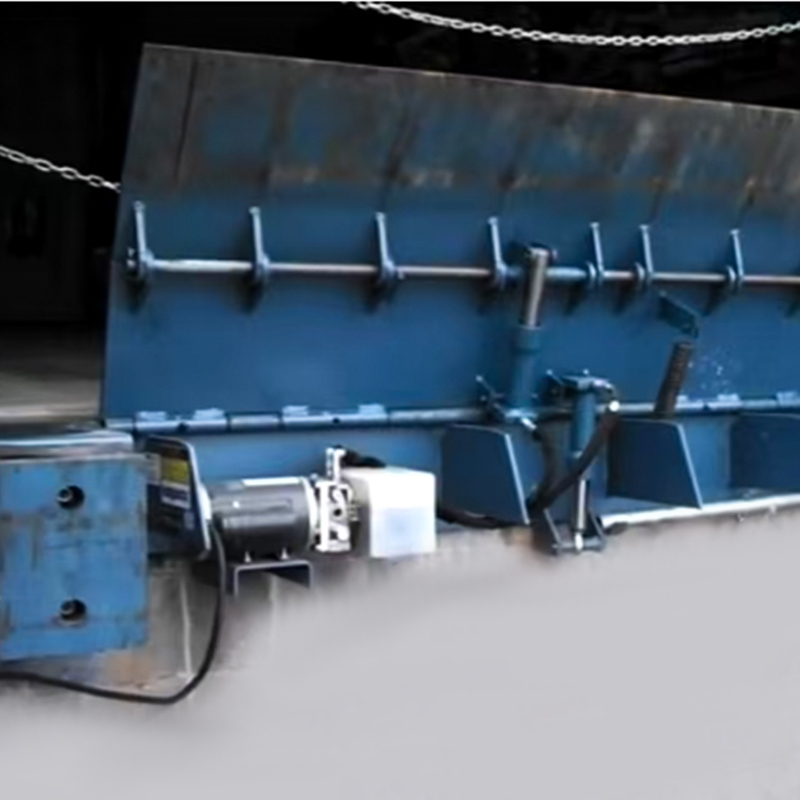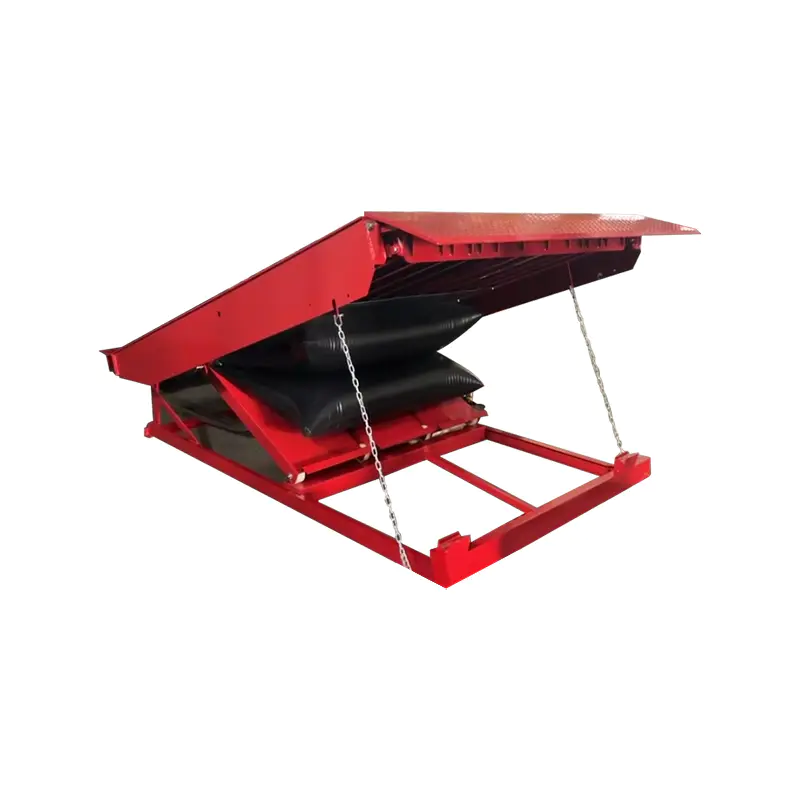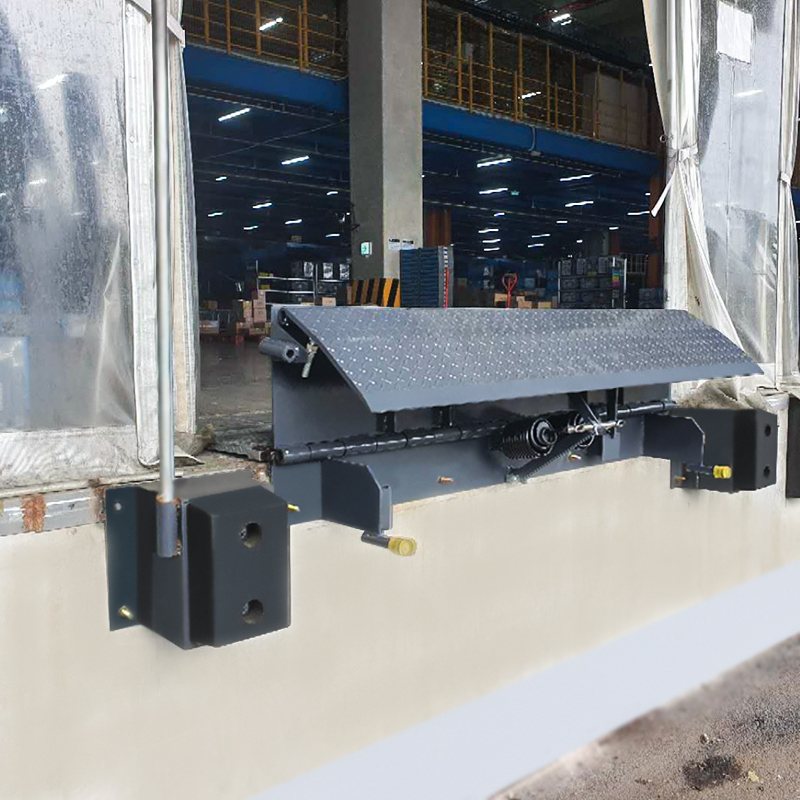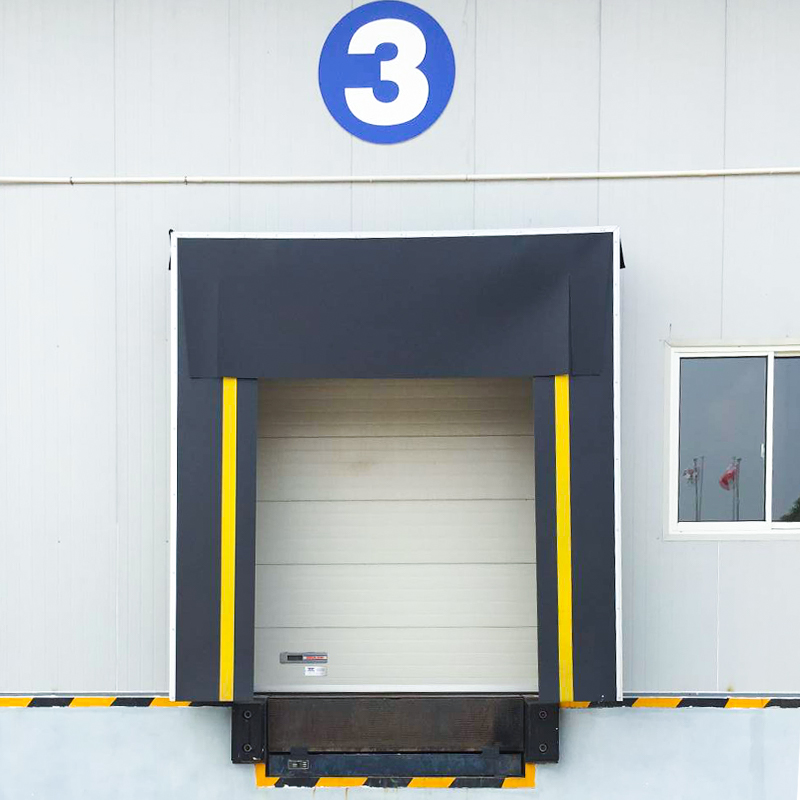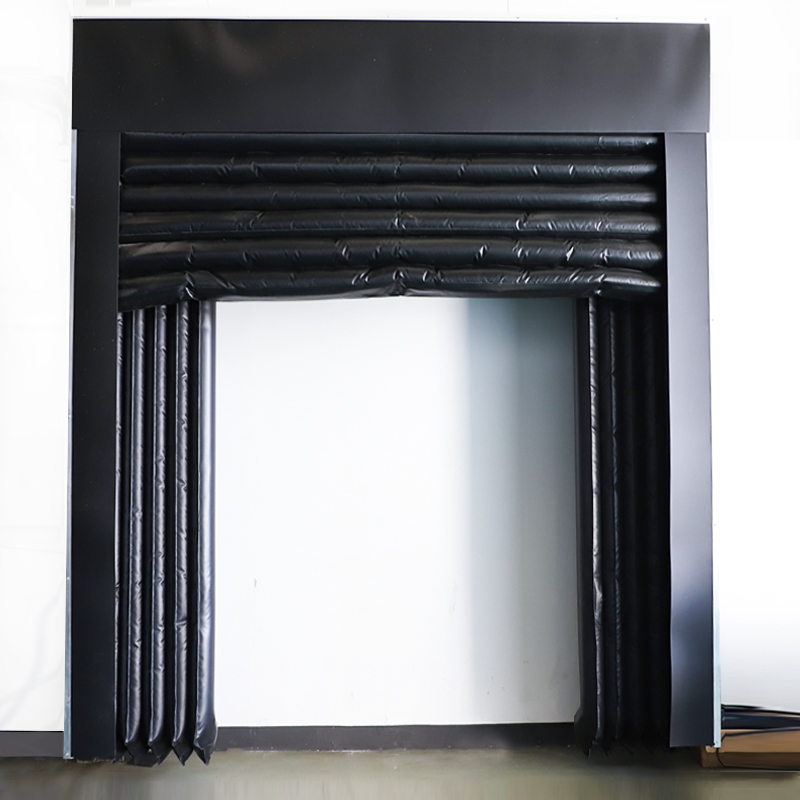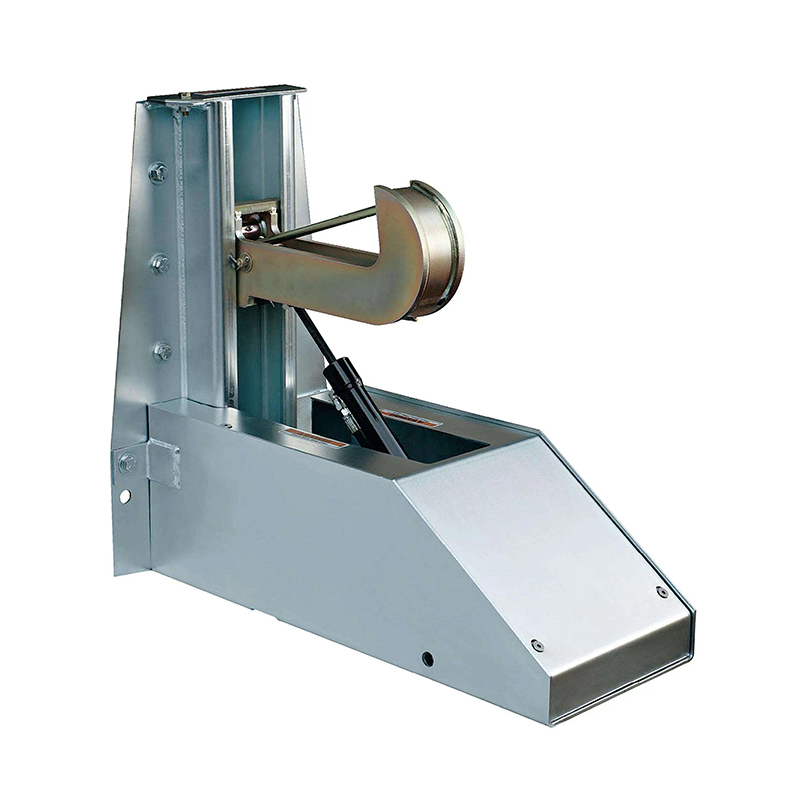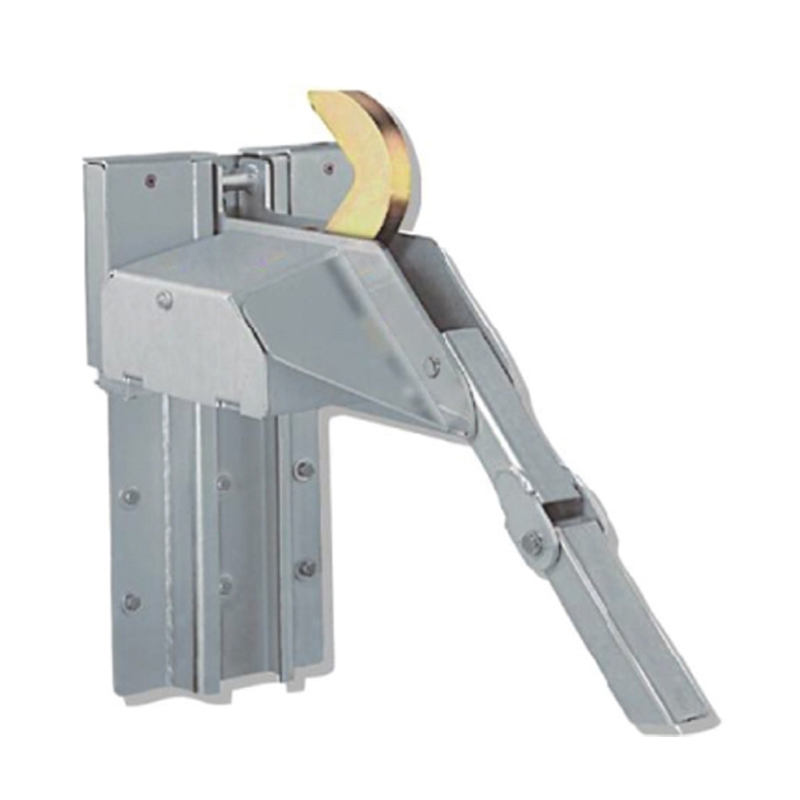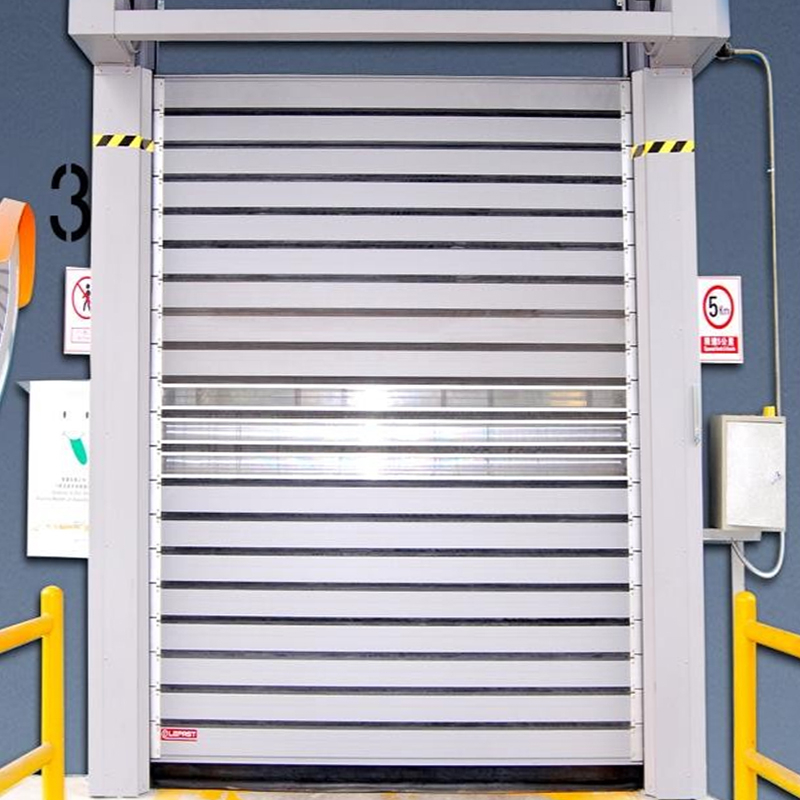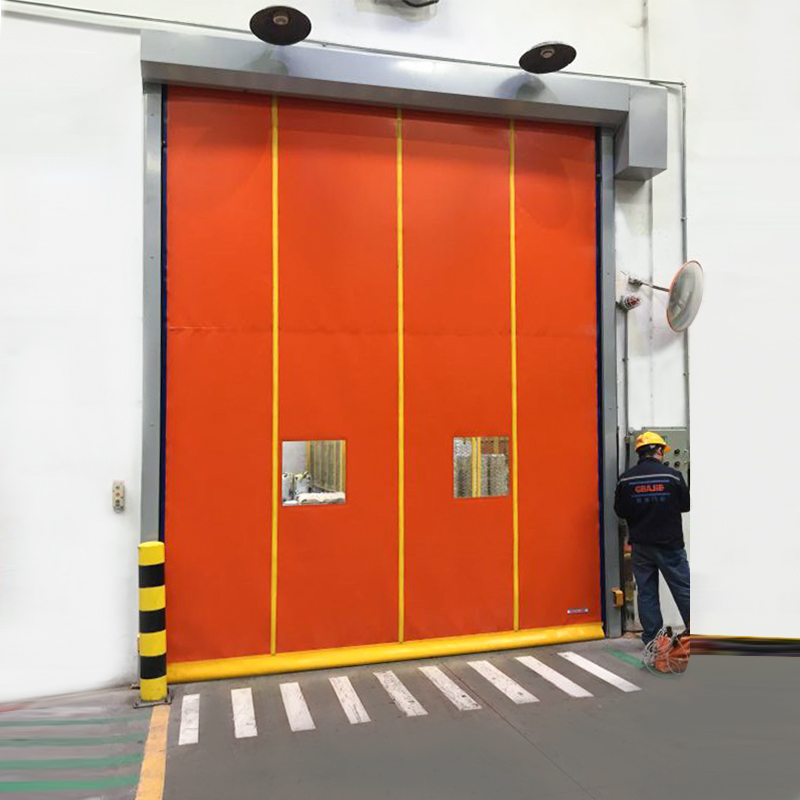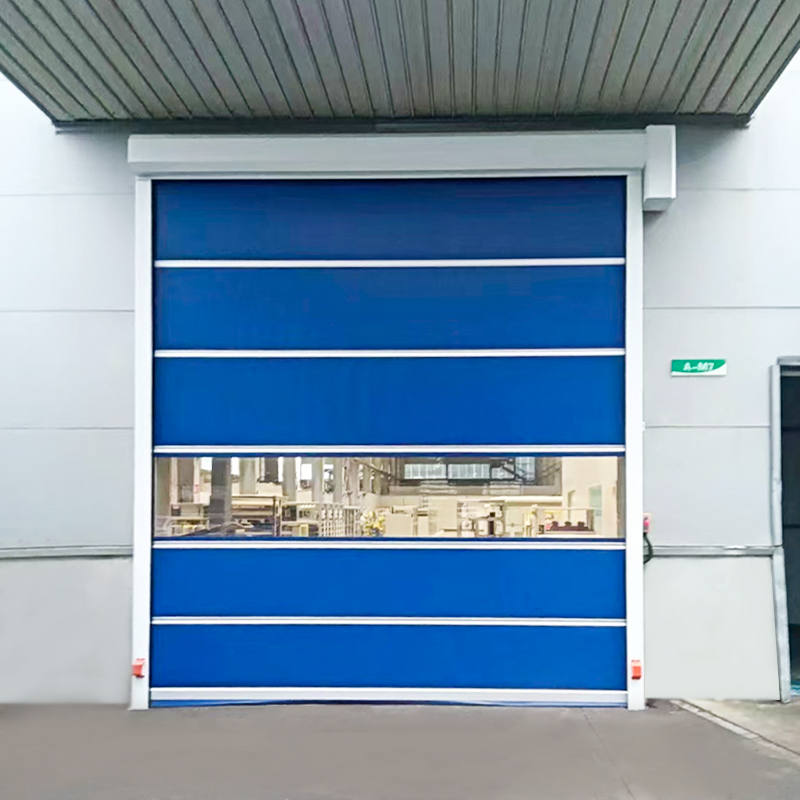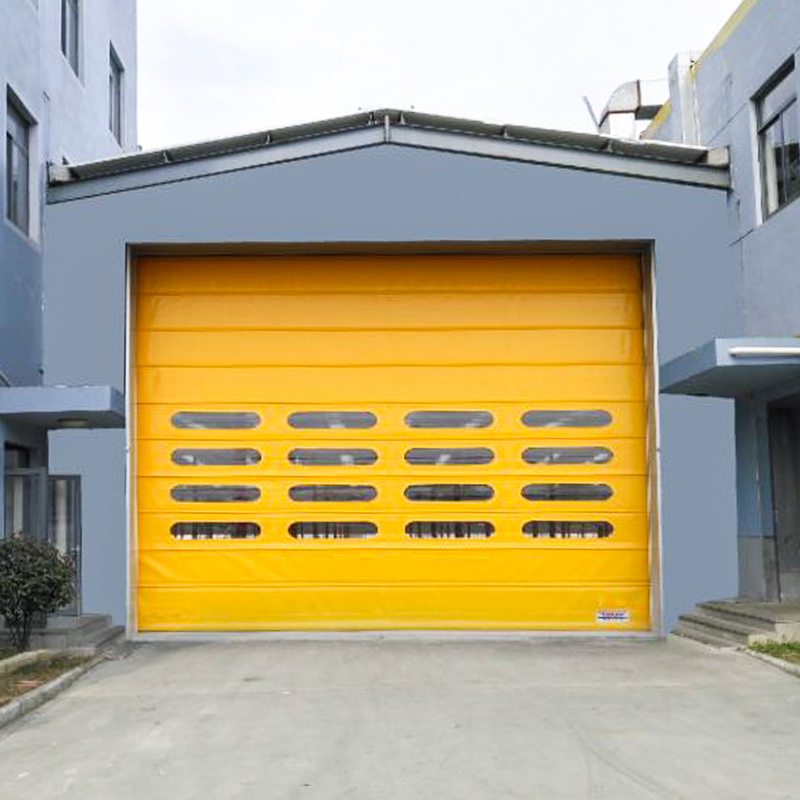Reinforced Structural Design and Load DistributionEOM Industrial Dock Levelers are engineered with...
1. Enhancing Operational Efficiency with Industrial Dock Levelers
Operational efficiency is the backbone of any successful warehouse, distribution center, or manufacturing facility. Industrial dock levelers are a critical component in this process because they directly influence how quickly and safely goods are loaded and unloaded between docks and transport vehicles. The fundamental purpose of industrial dock levelers is to bridge the vertical gap and horizontal distance between the loading dock and the bed of a truck or trailer, which varies depending on vehicle size, load, and dock design. By providing a smooth, adjustable platform, dock levelers enable the rapid movement of goods, reduce manual labor, and minimize downtime—thereby enhancing overall operational efficiency.
First, the versatility of industrial dock levelers plays a significant role in increasing efficiency. Warehouses and shipping facilities frequently encounter trucks and trailers of varying heights. Without a dock leveler, forklifts or pallet jacks must navigate uneven surfaces, ramps, or awkward lifts, which drastically slows the loading process and increases the risk of accidents. Industrial dock levelers come in several types—mechanical, hydraulic, and air-powered—each designed to address different operational needs. Mechanical dock levelers use a system of springs and levers, providing a cost-effective solution for docks with lighter traffic. Hydraulic dock levelers offer a smoother, faster, and more automated adjustment process, which is ideal for high-volume operations where every second counts. Air-powered levelers use pneumatic systems to achieve quick deployment and retraction, useful in facilities requiring frequent dock adjustments. Selecting the right type tailored to the specific workflow can have a profound impact on the speed and reliability of loading operations.
Industrial dock levelers eliminate many of the inefficiencies related to manual cargo handling. When docks and trucks are misaligned or uneven, workers are often forced to manually maneuver heavy loads over awkward gaps or ramps, which not only takes more time but also increases physical strain and injury risk. By providing a stable, level surface, dock levelers allow forklifts and pallet jacks to travel seamlessly between the dock and the vehicle bed. This smooth transition reduces loading time significantly and lowers the chances of product damage or accidents. Facilities that invest in high-quality dock levelers often experience faster vehicle turnaround times, which means more trucks can be serviced in a day, improving logistics throughput and reducing congestion at the dock area.
In addition to speed, industrial dock levelers enhance operational efficiency by reducing the labor intensity required for loading dock activities. The traditional process of loading and unloading can be physically demanding, often requiring workers to lift and carry heavy items across uneven or unstable surfaces. This not only slows down operations but also leads to fatigue, errors, and workplace injuries. Industrial dock levelers mitigate these issues by creating a consistent surface, minimizing the need for manual adjustments or additional safety measures. Forklift operators can work more comfortably and confidently, maintaining higher productivity levels for longer periods. The reduced physical demand on workers also lowers absenteeism and turnover rates, which translates into significant cost savings and smoother operations.
Another key efficiency benefit lies in the reduction of dock downtime. Loading docks are high-traffic areas where even short delays can cascade into larger operational bottlenecks. Industrial dock levelers with automated or semi-automated features enable faster set-up and reset times. For example, hydraulic dock levelers often deploy within seconds at the push of a button, compared to mechanical systems that require manual lifting or lever operation. This quick responsiveness allows docks to handle more trucks without interruption. Modern dock levelers equipped with remote controls or integrated with warehouse management systems facilitate streamlined workflows by allowing dock attendants or operators to adjust the leveler from a safe distance, reducing delays caused by manual intervention.
The integration of industrial dock levelers into broader warehouse automation systems further amplifies efficiency gains. Automated loading and unloading equipment, such as conveyor belts, robotic forklifts, and AGVs (automated guided vehicles), depend on precise, reliable dock conditions to operate effectively. Industrial dock levelers with sensors and smart controls can automatically adjust to the correct height and angle, enabling seamless coordination with these automated systems. This reduces the need for human oversight, speeds up the material handling process, and decreases the margin for error. Facilities investing in such integrated solutions often see measurable improvements in operational throughput, accuracy, and safety compliance.
The use of industrial dock levelers helps to streamline the workflow by reducing vehicle turnaround time. Trucks and trailers waiting too long to load or unload cause congestion not only at the dock but also in staging areas and parking lots. By minimizing the gap and height differences swiftly, dock levelers enable faster dock-to-vehicle transfers, allowing drivers to leave promptly and new vehicles to be accommodated without delay. This optimizes the use of dock doors and supports more efficient scheduling, leading to better resource utilization and higher productivity.
Operational efficiency also benefits from the durability and reliability of quality industrial dock levelers. A well-maintained dock leveler reduces the risk of equipment failures that can halt dock operations unexpectedly. Breakdowns often lead to costly downtime, missed shipment deadlines, and strained customer relationships. Durable dock levelers constructed from high-grade materials with reliable mechanical or hydraulic systems provide consistent performance even under heavy daily use. Regular preventive maintenance, combined with the selection of trusted products, ensures smooth operation and avoids unexpected disruptions.
Industrial dock levelers contribute indirectly to operational efficiency by improving the overall workplace environment. By minimizing risks associated with loading and unloading activities, these devices help reduce workplace injuries and insurance claims. A safer work environment leads to higher employee morale and retention, which positively impacts operational stability. Workers who feel safe and supported are more likely to perform efficiently, further enhancing productivity.
2. Improving Workplace Safety Through Industrial Dock Levelers
Workplace safety is a fundamental concern in any industrial environment, particularly in loading dock operations where heavy machinery, high platforms, and constant vehicle movement present numerous hazards. Industrial dock levelers play a crucial role in significantly improving safety conditions at loading docks by addressing the inherent risks posed by height differences, gaps, and unstable surfaces between the dock and trucks or trailers. By creating a stable, adjustable platform, these devices reduce the likelihood of accidents and injuries, protect equipment and cargo, and help companies comply with regulatory safety standards.
One of the primary safety challenges in loading dock environments is the vertical and horizontal gap between the dock surface and the vehicle bed. Trucks arrive with varying trailer heights due to differences in vehicle design, load weight, or suspension settings, creating dangerous drop-offs or inclines when loading or unloading without the proper equipment. Without industrial dock levelers, forklifts, pallet jacks, and workers must navigate uneven terrain or makeshift ramps that increase the risk of slips, trips, and falls. These incidents can result in serious injuries, costly workers’ compensation claims, and operational delays. Industrial dock levelers effectively eliminate these hazards by providing a smooth transition that adjusts to the exact height of the vehicle bed, ensuring a level surface for equipment and personnel.
Modern industrial dock levelers incorporate multiple built-in safety features designed specifically to prevent accidents and protect workers during dock operations. Safety legs, also known as support legs or safety props, are mechanical devices that provide a fail-safe support structure beneath the leveler platform. If the main lifting mechanism fails or if the leveler is improperly positioned, these legs prevent the deck from collapsing, protecting workers and equipment from sudden drops. This redundancy is vital in maintaining a safe working environment, especially when heavy forklifts and loads are present on the dock.
Another key safety feature is the locking mechanism on the lip of the dock leveler, which secures the extended lip firmly against the truck bed during loading and unloading. This lock prevents the lip from slipping or retracting unexpectedly under load, which could otherwise cause a forklift to fall or a load to shift dangerously. Industrial dock levelers are equipped with non-slip surfaces or safety coatings on the platform and lip to enhance traction for forklifts and personnel, further reducing the risk of slips, especially in wet or oily conditions.
Automatic return or retraction mechanisms built into many hydraulic and air-powered dock levelers contribute significantly to workplace safety. After the loading or unloading operation is complete, these systems safely retract the dock leveler and lip back into the stored position without requiring manual intervention. This reduces the chance of operator error or injury during manual handling and ensures that the dock area remains clear and safe for other operations, such as vehicle entry or pedestrian movement.
Industrial dock levelers also play an important role in improving safety through reducing the physical strain on workers. Loading dock tasks often involve repetitive lifting, bending, and maneuvering heavy cargo over uneven surfaces, which increases the risk of musculoskeletal injuries. By providing a stable, level platform, dock levelers reduce the need for awkward lifting positions or additional manual adjustments. Forklift operators can move loads with greater ease and control, leading to fewer accidents caused by human error or fatigue. The reduction in worker strain not only prevents injuries but also promotes higher productivity and morale.
Dock levelers improve safety by facilitating effective vehicle restraint systems, which secure trucks in place during loading and unloading to prevent unexpected movement. A dock leveler combined with vehicle restraint devices such as wheel chocks, dock locks, or automated restraints ensures that the truck cannot move away from the dock, which could otherwise lead to falls or equipment damage. When integrated properly, these systems create a safer environment for workers operating forklifts and handling goods.
Regulatory compliance is another critical dimension where industrial dock levelers improve workplace safety. Occupational Safety and Health Administration (OSHA), American National Standards Institute (ANSI), and other governing bodies have established stringent guidelines and standards to minimize risks associated with loading dock operations. These regulations cover aspects such as dock height tolerances, load capacity ratings, anti-slip surfaces, and safety inspections. By using industrial dock levelers that meet or exceed these standards, companies reduce liability, avoid costly fines, and demonstrate commitment to employee safety. Regular inspections and maintenance routines mandated by safety standards also help ensure that dock levelers remain in optimal working condition, preventing accidents due to equipment failure.
Training and awareness are crucial in maximizing the safety benefits of industrial dock levelers. While the equipment itself reduces hazards, proper use by trained personnel ensures that safety features are utilized correctly. Operators must understand how to deploy, adjust, and retract dock levelers safely, recognize warning signs of wear or malfunction, and respond appropriately to emergencies. Many manufacturers provide training materials, safety manuals, and support to help facilities develop comprehensive safety protocols around dock leveler operations. Integrating dock levelers into broader workplace safety programs fosters a culture of safety and accountability.
Another important safety consideration is the environmental conditions around the loading dock. Industrial dock levelers are often exposed to outdoor elements such as rain, snow, ice, and extreme temperatures, which can create slippery surfaces or mechanical failures if not properly designed or maintained. Dock levelers with corrosion-resistant coatings, weather seals, and heated lip options help mitigate these risks by ensuring safe operation even in adverse conditions. Regular cleaning and inspection protocols prevent buildup of debris or ice that could compromise safety.
The ergonomic design of industrial dock levelers supports safer work environments. Features such as easy-to-operate controls, minimized manual effort for deployment, and clear visual indicators reduce operator errors and fatigue. For example, hydraulic systems with push-button controls allow workers to adjust the leveler without strenuous physical exertion or awkward postures, reducing the chance of injury.
Lastly, the presence of industrial dock levelers can improve emergency response times and procedures. By maintaining a consistent and safe transition point between docks and vehicles, levelers facilitate quicker evacuation routes or access for emergency personnel if needed. A well-maintained dock leveler reduces the likelihood of blockages or accidents that could hinder urgent operations.
3. Durability and Longevity of Industrial Dock Levelers in Harsh Environments
Industrial dock levelers are vital components in the logistics and warehouse industry, often subjected to some of the harshest operating environments imaginable. Their durability and longevity are critical not only to maintaining efficient operations but also to ensuring safety, minimizing costly downtime, and maximizing return on investment. Understanding how industrial dock levelers are engineered to withstand intense usage, environmental stressors, and mechanical wear is essential for selecting, maintaining, and operating these devices effectively in demanding industrial settings.
One of the foremost challenges dock levelers face in industrial environments is the constant exposure to heavy loads and repeated mechanical stress. Warehouses, manufacturing plants, and distribution centers often process hundreds or even thousands of shipments daily, requiring dock levelers to endure frequent loading and unloading cycles. This includes supporting the weight of loaded forklifts, pallet jacks, and other heavy material handling equipment traveling over the dock surface. To withstand such relentless use, industrial dock levelers are constructed from high-strength structural steel, which offers exceptional load-bearing capacity and resistance to deformation. The steel components, including the deck, lip, and frame, are typically designed with reinforced crossmembers, gussets, and welded seams to distribute stress evenly and prevent fatigue failures. High-quality fabrication processes, such as robotic welding and precision machining, further enhance the strength and consistency of these parts.
In addition to structural strength, industrial dock levelers must be resilient against corrosion, particularly when used in outdoor or semi-outdoor dock areas exposed to moisture, chemicals, and temperature fluctuations. Corrosion can weaken metal components, leading to premature failure or unsafe operating conditions. To combat this, many dock levelers feature protective coatings, such as industrial-grade primers and paint, or powder coatings that provide a durable barrier against rust and environmental damage. Some manufacturers offer galvanized steel or stainless-steel options for enhanced corrosion resistance in especially aggressive environments like food processing plants or chemical warehouses. Regular cleaning and maintenance to remove dirt, salt, and chemical residues are essential to preserving these coatings and preventing corrosion-related deterioration.
Temperature extremes present another significant environmental challenge for industrial dock levelers. In cold storage warehouses or outdoor docks in winter climates, freezing temperatures can cause hydraulic fluids to thicken, metal components to contract, and mechanical parts to become brittle. Conversely, high-temperature environments can accelerate wear on seals and lubricants, affecting hydraulic system performance. To address these conditions, specialized dock levelers use cold-resistant hydraulic fluids and components rated for low temperatures. Some models incorporate heated decks or lip areas to prevent ice buildup, which can otherwise create hazardous slipping conditions or mechanical obstructions. Similarly, seals, hoses, and moving parts are selected or designed to maintain flexibility and performance across a wide temperature range, ensuring reliable operation year-round.
The mechanical components of industrial dock levelers, such as hinges, pins, springs, hydraulic cylinders, and control valves, are critical to their durability. These parts undergo constant movement and load cycles, making them susceptible to wear and tear. High-quality dock levelers use hardened steel pins and bushings, corrosion-resistant materials, and precision-machined components to reduce friction and wear. Hydraulic systems are engineered with robust cylinders and seals designed to withstand pressure fluctuations and resist contamination from dust or moisture. Preventive maintenance programs, including regular lubrication, inspection, and timely replacement of worn parts, play a vital role in extending the life of these components. Facilities that neglect maintenance often experience premature failures that lead to costly repairs and operational downtime.
The design of industrial dock levelers also impacts their longevity. Levelers with simpler mechanical systems, such as mechanical or spring-assisted models, tend to have fewer failure points and can be more durable in environments where maintenance access is limited. However, hydraulic and air-powered levelers, while more complex, offer smoother operation and better adaptability but require stricter maintenance discipline to ensure longevity. Choosing the right type based on the facility’s operational demands and maintenance capabilities is critical to balancing durability and performance.
Another factor influencing durability is the quality of installation. Proper mounting, alignment, and integration with the dock structure are essential to ensure that dock levelers operate as intended and distribute loads effectively. Poor installation can cause misalignment, uneven wear, or excessive stress on certain components, leading to early failures. Professional installation by experienced technicians who follow manufacturer guidelines and industry best practices greatly enhances the lifespan and reliability of dock levelers.
Industrial dock levelers must also withstand impact forces and abuse typical of busy loading docks. Forklifts and trucks sometimes make hard contact with dock edges or dock levelers, causing dents, bends, or cracks. Heavy or oversized loads can impose unexpected stresses. To mitigate damage, many dock levelers are equipped with impact bumpers, reinforced edges, and breakaway lips designed to absorb shock and protect structural elements. These features prevent minor collisions from evolving into costly structural repairs. Operator training and dock supervision help reduce the frequency and severity of impact damage.
Environmental contaminants such as dust, debris, oils, and chemicals are common in industrial settings and can adversely affect dock leveler performance and longevity. Dirt and debris can accumulate in hinges, pins, and hydraulic lines, causing blockages or increased wear. Oils and chemicals may degrade seals or paint coatings, promoting corrosion or hydraulic leaks. Effective sealing, protective covers, and routine cleaning protocols are essential to minimize contamination. Some industrial dock levelers incorporate sealed bearings or self-lubricating components to resist these environmental factors, enhancing durability.
The longevity of industrial dock levelers also depends on the operational load relative to their rated capacity. Overloading dock levelers beyond their specified weight limits accelerates structural fatigue, damages hydraulic systems, and compromises safety. It is critical for facility managers to select dock levelers with adequate capacity margins that account for the heaviest expected loads plus safety factors. Regular load audits and monitoring help ensure that equipment is used within safe limits, preserving its structural integrity and function over time.
From a financial perspective, investing in durable industrial dock levelers with high-quality materials and engineering pays dividends by reducing downtime and repair expenses. Facilities that opt for cheaper, lower-quality models may save initially but face frequent breakdowns and replacements that disrupt operations and increase costs. By contrast, premium dock levelers supported by comprehensive warranties and manufacturer support offer peace of mind and predictable lifecycle costs.
Finally, proactive maintenance is the cornerstone of maximizing the durability and longevity of industrial dock levelers. A structured maintenance program includes regular inspections to identify signs of wear, corrosion, hydraulic fluid levels, and mechanical integrity. Scheduled lubrication of moving parts, adjustment of tension springs, and replacement of worn components keep the leveler functioning smoothly. Maintenance records help track equipment condition and anticipate repairs before failures occur. Many manufacturers provide detailed maintenance guides and offer service contracts to assist facilities in maintaining optimal performance and extending equipment life.
4. Customization and Versatility of Industrial Dock Levelers for Various Applications
Industrial dock levelers are critical infrastructure components that facilitate safe and efficient material handling between loading docks and transport vehicles. One of their most valuable attributes is their exceptional customization and versatility, allowing them to be adapted precisely to the diverse requirements of various industries and operational settings. This flexibility is fundamental because no two loading docks are identical—differences in dock height, vehicle types, operational volumes, environmental conditions, and safety regulations demand tailored solutions that maximize productivity and safety. Understanding how industrial dock levelers can be customized and how their versatile features benefit different applications is essential for facility managers, engineers, and logistics planners aiming to optimize dock operations.
Customization starts with the fundamental physical dimensions of the dock leveler. Industrial docks vary in height, width, and depth depending on building architecture and geographic location. Dock levelers must be sized accordingly to fit securely within the dock pit while providing adequate platform space to bridge the gap between dock and vehicle bed. Manufacturers offer levelers in a range of standard and custom sizes, including deck lengths and widths, as well as variable lip lengths to accommodate different truck bed configurations. A longer lip is often necessary when loading low-clearance vehicles or trailers with varying bed heights, while shorter lips are suited for tighter dock spaces or specialized vehicle types. Selecting the right size ensures safe, efficient operation without imposing unnecessary strain on the leveler components.
Load capacity is another key customization factor that directly impacts versatility. Industrial dock levelers are engineered to support a wide range of weight loads—from a few thousand pounds for light-duty applications to tens of thousands of pounds for heavy industrial or manufacturing environments. For example, a distribution center handling palletized retail goods may require levelers rated for 20,000 to 30,000 pounds, while automotive assembly plants or steel manufacturing facilities may need units capable of supporting loads exceeding 50,000 pounds. Customizing the load rating involves adjusting the structural design, material thickness, reinforcement methods, and hydraulic or mechanical components to ensure the dock leveler can safely bear the maximum anticipated weight without failure or excessive wear. Facilities must carefully assess their load requirements and select or commission dock levelers engineered accordingly to avoid safety hazards and costly downtime.
Beyond size and capacity, the choice of operating mechanism is a crucial customization aspect that enhances versatility across different applications. Industrial dock levelers come primarily in three types: mechanical, hydraulic, and air-powered. Mechanical dock levelers utilize springs and levers, offering a simple, reliable, and cost-effective solution suited to facilities with lower volumes or less frequent dock use. Their simplicity translates to easier maintenance and lower upfront costs but may require more physical effort to operate. Hydraulic dock levelers, by contrast, provide smooth, rapid, and automated adjustment via hydraulic cylinders controlled by push-button or remote systems. This type is ideal for high-throughput warehouses and distribution centers where speed and ease of use are critical. Air-powered dock levelers employ pneumatic systems, offering a balance of automation and energy efficiency, often preferred in food processing or pharmaceutical industries where hygiene and energy conservation are priorities. Customizing the operating mechanism to fit workflow demands enhances dock versatility and operator ergonomics.
Environmental conditions also influence customization choices, significantly affecting dock leveler performance and durability. Facilities located in extreme climates—such as cold storage warehouses, outdoor docks exposed to weather, or plants handling corrosive materials—require dock levelers built or modified to withstand these challenges. For example, cold storage environments necessitate dock levelers with special cold-resistant hydraulic fluids, sealed components to prevent moisture ingress, and heated decks or lips to prevent ice formation. Chemical manufacturing facilities may require dock levelers coated with corrosion-resistant finishes or constructed from stainless steel to resist acid or alkali damage. Outdoor docks exposed to rain, snow, or dust benefit from weatherproofing features such as sealed hydraulic systems, stainless steel hardware, and protective bumpers. Customizing dock levelers for environmental resilience ensures consistent, safe operation and prolongs equipment lifespan.
The integration of safety features is another vital customization area that enhances industrial dock leveler versatility for various operational contexts. Different industries face unique safety challenges, necessitating tailored solutions to meet regulatory and workplace safety requirements. Modern dock levelers can be equipped with safety legs or support props to prevent deck collapse in case of mechanical failure, lip locks to secure the platform to the vehicle, non-slip surfaces to prevent falls, and communication systems such as warning lights or alarms to alert personnel during operation. Facilities may also customize control options, from manual lever operation to remote wireless controls or integration with centralized warehouse management systems for automated safety protocols. These safety customizations adapt dock levelers to industry-specific standards and ensure regulatory compliance.
Industrial dock levelers can also be customized to support integration with advanced loading dock technologies and automation systems. As logistics and warehousing increasingly adopt automation—including conveyor systems, automated guided vehicles (AGVs), and robotic material handling—the compatibility of dock levelers with these technologies is paramount. Custom features such as sensors for vehicle presence detection, position feedback systems, and communication interfaces allow dock levelers to synchronize their movements with automated equipment. For instance, sensors can automatically adjust the leveler height as a truck arrives, minimizing manual input and reducing cycle times. Such intelligent customization enables facilities to boost throughput and optimize labor utilization.
Another aspect of customization involves the aesthetics and finish of industrial dock levelers, which can be important for facilities where corporate branding or environmental integration matters. Some manufacturers offer options for color coatings, branding decals, or finishes that complement the facility’s design or visibility requirements. This may not directly impact performance but contributes to a professional appearance and can support safety by improving the visibility of dock edges and moving parts.
Finally, customization extends to maintenance and serviceability features that improve the versatility and operational availability of industrial dock levelers. Some designs incorporate easy-access grease fittings, modular components for rapid replacement, or self-diagnostic sensors that alert maintenance teams to emerging issues before they cause downtime. Customizable maintenance contracts or remote monitoring options allow facilities to tailor service programs to their operational rhythms, further enhancing dock leveler reliability and lifespan.
5. Reducing Equipment Wear and Tear with Industrial Dock Levelers
In modern warehouse and logistics operations, material handling equipment such as forklifts, pallet jacks, and trucks are indispensable for efficient loading and unloading. These machines represent significant capital investments, and their longevity and reliability are crucial for operational continuity and cost control. One of the less obvious but highly impactful benefits of industrial dock levelers is their role in reducing wear and tear on such equipment. By providing a stable, adjustable platform that compensates for differences in dock and vehicle heights, dock levelers minimize mechanical stress and damage to material handling vehicles and their operators, thereby extending equipment life and improving overall operational efficiency.
The primary way industrial dock levelers reduce equipment wear is by eliminating the harsh jolts, shocks, and uneven surfaces forklifts and pallet jacks encounter when transitioning between the dock and vehicle bed. Without a dock leveler, operators must navigate a vertical gap or a sloped transition that varies depending on the truck’s suspension and load. This uneven surface causes forklifts to experience significant impact forces on their tires, suspension systems, hydraulic components, and chassis as they travel over the gap. Such repeated impacts accelerate the degradation of critical parts, increase the frequency of repairs, and shorten the effective lifespan of these expensive machines.
Industrial dock levelers create a level surface that allows forklifts and pallet jacks to maintain stable contact with the ground, reducing the risk of sudden jolts that can damage load forks, hydraulic rams, or operator cabins. Smooth transitions supported by the dock leveler reduce shock loads on the lifting mechanism, protecting hydraulic seals and preventing fluid leaks that can otherwise result from rough operation. The cushioning effect provided by properly designed dock levelers absorbs some of the mechanical energy generated by movement, shielding the equipment from unnecessary strain.
In addition to mechanical wear on the vehicles themselves, the tires and wheels of forklifts and pallet jacks benefit greatly from the use of dock levelers. Tires absorb much of the shock from rough surfaces, but continual jolting over gaps or steep inclines causes premature tire wear, flat spots, or even damage to the wheel assembly. This not only leads to higher replacement costs but also negatively affects vehicle handling and safety. Dock levelers provide a smooth and level transition, preserving tire integrity, improving traction, and reducing the likelihood of accidents caused by tire failure or loss of control.
Industrial dock levelers also protect the dock structure and truck beds from damage caused by improper loading and unloading. Uneven loading due to height mismatches or unstable platforms can cause forklifts to bump or scrape dock edges or vehicle frames, leading to costly repairs. Dock levelers mitigate these risks by aligning dock and vehicle surfaces and ensuring stable, predictable positioning for material handling equipment. This prevents equipment from exerting uneven forces on the dock or truck, maintaining structural integrity and reducing maintenance costs.
Beyond mechanical components, dock levelers reduce operator fatigue and stress, which indirectly protects equipment by promoting safer handling. Navigating rough or unstable transitions demands greater skill and attention, increasing the chance of operator error that can result in collisions or improper loading. A level and stable platform provided by industrial dock levelers allows operators to move more confidently and smoothly, reducing abrupt maneuvers that contribute to equipment wear and accidents.
The benefits of dock levelers extend to the hydraulic and electrical systems of material handling equipment. Sudden impacts and uneven surfaces place additional stress on hydraulic pumps, valves, and cylinders, accelerating wear and increasing the risk of leaks or failures. Smooth transitions reduce pressure spikes and mechanical shocks transmitted to these sensitive components. Similarly, vibrations caused by uneven dock-to-truck interfaces can loosen electrical connections or damage onboard electronics over time. Industrial dock levelers minimize such vibration and impact, preserving the integrity of these systems and reducing costly downtime.
Properly maintained dock levelers further enhance equipment protection by providing consistent performance. Levelers that operate smoothly without excessive movement or play ensure that forklifts experience predictable surfaces. Conversely, malfunctioning or poorly maintained dock levelers with loose components or irregular movement can introduce new risks and damage potential. Therefore, integrating dock leveler maintenance with overall equipment care programs is essential to maximize the benefit of reduced wear and tear on material handling machinery.
Industrial dock levelers also contribute to reducing damage caused by overloading or improper weight distribution. By allowing forklifts to load and unload with greater stability and control, dock levelers help ensure that loads are placed evenly on pallets and within trucks. This reduces the risk of shifting loads during transit or handling, which can damage equipment and cargo alike. Stable loading conditions extend equipment life by minimizing sudden weight shifts that cause mechanical strain.
From a financial perspective, the role of industrial dock levelers in reducing equipment wear and tear translates into substantial cost savings over time. Lower repair and maintenance expenses, reduced downtime, and longer equipment replacement cycles improve return on investment and operational budgeting. Facilities that prioritize dock leveler installation and maintenance typically see measurable reductions in forklift breakdowns and tire replacements. These savings are amplified in high-volume operations where equipment uptime is critical.
By protecting equipment from excessive wear, industrial dock levelers indirectly support sustainability goals. Extending the service life of forklifts and pallet jacks reduces waste associated with premature equipment disposal and manufacturing impacts of new machines. Efficient dock levelers contribute to greener operations by optimizing equipment utilization and minimizing the environmental footprint of maintenance activities.

 English
English Español
Español Tiếng Việt
Tiếng Việt

